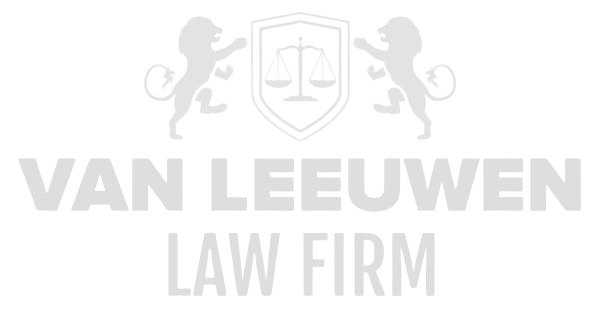The forensic investigation of transactions is a critical component in ensuring transparency and integrity within organizations facing suspicions of financial and economic crime. In a world where financial flows are becoming increasingly complex and cross-border, the risk of abuse and criminal infiltration into legitimate business activities has significantly increased. Transactions that appear legitimate at first glance may, upon closer inspection, turn out to be intertwined with money laundering schemes, corruption, conflicts of interest, or fraud. When such suspicious transactions emerge, they not only pose a threat to the legality of business operations but can also have far-reaching consequences for the reputation, legal standing, and strategic continuity of the entities involved. The importance of a thorough, meticulous, and independent investigation into financial transactions cannot be overstated.
Both national and international companies, their executives and supervisory bodies, as well as public organizations, are regularly scrutinized by regulators, judicial authorities, or internal reporting mechanisms when signs of financial irregularities surface. In this context, a forensic investigation of transactions serves as an invaluable tool for establishing the facts, uncovering hidden structures, and identifying possible criminal or regulatory implications. Forensic investigations are characterized by a combination of legal, accounting, and data-analytical expertise, through which transactions are examined in detail and placed within their broader context. This multidisciplinary approach is essential for reconstructing the course of transactions, understanding intentions, and identifying involved parties in order to gain insight into irregularities or misconduct that could fundamentally damage the functioning and image of the organization.
Detection of Suspicious Transaction Patterns
Detecting suspicious transaction patterns is the first crucial step in uncovering financial misconduct within complex corporate structures. As part of a forensic investigation, financial data, bank transactions, cash flows, and accounting documents are analyzed to identify anomalies that may indicate irregularities. These patterns may include unexplained transactions between related parties, sudden increases in expenditures without a clear business rationale, unusual fund flows to foreign accounts, or the use of shell structures designed to obscure the true nature of transactions.
In addition to identifying unusual transactions, the detection phase requires insight into the industry in which the investigated entity operates, as well as knowledge of laws and regulations related to anti-money laundering, anti-corruption, and compliance. This allows for accurate interpretation of anomalies within the context of prevailing market practices and the specific business environment. A thorough analysis at this level prevents premature conclusions and ensures a well-founded assessment of the seriousness and nature of the observed transactions.
By leveraging advanced data analytics, machine learning, and manual casework, suspicious patterns can be reconstructed at a micro level. This enables investigators to trace funds back to their origin, uncover connections between entities, and detect potential conflicts of interest or misconduct. Such in-depth analysis provides the foundation for reconstructing the transaction chain and identifying the parties involved.
Reconstruction of Transaction Flows
The reconstruction of transaction flows is one of the most labor-intensive and technically complex components of a forensic investigation. This process involves organizing and analyzing all relevant financial data in chronological order to trace how funds moved within and outside the organization. The goal is to obtain full transparency of the money flows, with specific attention to intermediaries, foreign entities, private accounts of officials, and transactions conducted through offshore vehicles or trust structures.
An accurate reconstruction requires access to a wide range of documents and data sources, including bank statements, contracts, emails, internal memos, invoices, and correspondence with third parties. This information is compiled into a holistic financial timeline, where each step in the transaction chain is mapped and contextualized. Particular attention is given to incomplete or inconsistent information, as these often point to attempts to obscure or manipulate facts.
By reconstructing transaction flows, investigators can identify specific moments and actors responsible for decisions that triggered suspicious fund movements. This contributes not only to fact-finding but also provides essential evidence in legal proceedings, internal disciplinary actions, or regulatory processes. A thoroughly documented transaction reconstruction can be decisive in the outcome of a dispute or investigation.
Analysis of Involved Parties
In a forensic investigation of transactions, analyzing the involved parties is crucial for gaining insight into responsibilities, motives, and potential conflicts of interest. This involves examining not only natural persons such as executives, shareholders, or intermediaries, but also legal entities, vehicles, and international networks that may have played a role in the transactions. By mapping the relationships among these parties, a clear picture emerges of their interconnections and any potential collusion or intent.
The analysis of involved parties includes an in-depth screening of their background, financial interests, business connections, and previous involvement in similar transactions or investigations. Public sources, compliance databases, and internal documents are used in combination to build a comprehensive picture. Specific attention is paid to patterns that may indicate repeated behavior, conflicting interests, or hidden ownership.
Determining the extent of involvement of specific persons or entities requires a careful legal qualification of actions and intent. Not every involvement is automatically criminal or blameworthy. It is therefore important to analyze the context, decision-making structures, and communication between parties to provide a legally sound interpretation. This process leads to a nuanced assessment of the roles and liabilities of the various parties involved.
Legal Implications and Qualifications
When irregularities in transactions are established, the question arises as to what legal implications are associated with them. The forensic investigation must clarify whether and to what extent there has been a violation of laws and regulations, such as the Criminal Code, the Anti-Money Laundering and Terrorist Financing Act (Wwft), the Sanctions Act, or relevant administrative law provisions. The legal qualification of findings is crucial for determining next steps, risks, and potential reporting obligations.
Thorough legal interpretation requires expertise in national and international criminal law, administrative law, financial law, and corporate law. Each irregularity must be assessed against the legal criteria for criminal liability, accountability, and mandatory reporting. Intent, negligence, and the internal role of the individuals involved are key factors, as is the extent to which internal controls failed or were circumvented.
In addition to criminal consequences, the findings of a forensic investigation may also have civil, administrative, or disciplinary consequences. These may include liability claims against directors, revocation of licenses, fines by regulators, or civil claims by third parties. Therefore, a forensic investigation must not only establish facts but also provide clear insight into their legal significance.
International Dimensions and Cross-Border Transactions
In many cases, suspicious transactions have an international dimension, involving funds being transferred through foreign banks, offshore structures, or entities in tax havens. These cross-border components complicate transparency and increase the risk of money laundering, corruption, and tax evasion. Investigating such transactions requires cooperation with foreign authorities, access to international databases, and knowledge of foreign legal systems.
The analysis of international transactions includes mapping correspondent banking relationships, the use of shell companies, double bookkeeping, and other techniques designed to conceal the origin and destination of funds. Uncovering these structures requires specialized forensic techniques and the ability to integrate and interpret legal and accounting information from various jurisdictions.
The international dimension also has legal implications. Different jurisdictions apply varying standards for evidence, reporting obligations, and legal protections. This makes it essential to develop a strategy that is legally sound both within the national framework and in line with international standards. Cooperation with foreign regulators, prosecutors, and financial institutions is often indispensable in this regard.
Reliability of Data and Documentation
The reliability of a forensic analysis depends entirely on the availability and integrity of data and documentation. In practice, however, data may be incomplete, fragmented, or manipulated. This presents a major challenge for investigators, as reconstructing reality relies on the accuracy of source information. Documents may have been deleted, falsified, or deliberately formulated ambiguously to obstruct the investigation.
To assess data reliability, digital forensic techniques, metadata analysis, and verification through independent sources are used. This enables investigators to determine whether documents are authentic, when and by whom they were created, and whether there are signs of alteration or manipulation. Discrepancies between administrative data and witness statements are also examined.
Ensuring data quality is not only vital for the reliability of the investigation but also for the legal usability of the findings. Only when it is plausible that the data used is authentic, relevant, and sufficient, can it serve as evidence in legal proceedings or form the basis for regulatory decisions. Strict quality control of data is therefore indispensable at every stage of the forensic investigation.
Reporting and Evidentiary Support
The final phase of a forensic transaction investigation involves reporting findings and building legal evidence. The investigation report must present the facts in a clear, structured, and legally sound manner, support the analysis, and explain the implications. The aim is to achieve objectivity, transparency, and completeness so that the report holds up in legal, regulatory, and public contexts.
Preparing such a report requires not only substantive expertise but also attention to legal strategy, communication, and potential reactions from involved parties. The wording of findings and conclusions must be carefully considered to avoid escalation and minimize unnecessary reputational damage. At the same time, the report must contain sufficient factual substantiation to serve as a basis for further action.
The investigation report is often used as evidence in criminal or administrative proceedings. Therefore, it is essential that all investigative steps are reproducible, sources are documented, and the methodology used is clearly explained. This enhances the credibility of the investigation and strengthens the position of the party using the report in a legal context.
Strategic Follow-Up and Mitigation
After completion of the forensic transaction investigation, the phase of strategic decision-making begins. Based on the findings, it must be determined what measures are necessary to mitigate risks, limit damage, and manage legal consequences. These measures may range from internal sanctions and restitution to notifying regulators or initiating legal proceedings against those involved.
Determining these follow-up steps requires an integrated risk analysis, weighing legal, financial, operational, and reputational interests. Factors such as the strength of evidence, likelihood of prosecution, third-party interests, and the desire to limit damage all play a role. In many cases, dialogue with regulators, shareholders, or public stakeholders will also be sought to restore trust and promote transparency.
Strategic follow-up steps should not only focus on remediation but also on structural improvement. Lessons learned from the forensic investigation are translated into adjustments in governance, compliance, internal control, and risk management. This prevents recurrence and strengthens the organization’s resilience against future threats. Thus, the forensic investigation of transactions becomes not merely a reactive exercise, but a strategic instrument for sustainable integrity.















